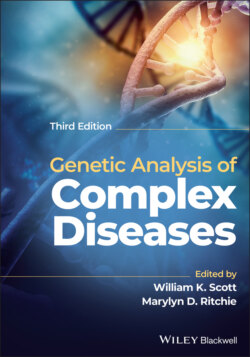Читать книгу Genetic Analysis of Complex Disease - Группа авторов - Страница 27
Functional Studies
ОглавлениеWhile most disease gene discovery efforts have claimed success based on finding variants that segregate with traits in pedigrees or polymorphisms significantly associated with the trait in population samples, this is, strictly, not sufficient evidence. More conclusive is evidence arising from biological systems (e.g. cultured cells, animal models, or human blood and tissue samples) that the trait can be either induced by introduction of the allele or ameliorated by blocking the action of the allele. In genetically complex traits, where the responsible variation may be a common polymorphism, it is even more critical that such evidence be found before success is declared.
Tests in biological systems can be of several types. Perhaps the most common is to test the action of the gene in a model organism, such as mouse, zebrafish, or fruit fly. With transgenic models, the proposed trait‐associated variant is introduced into the germline of the organism and the resulting offspring are examined for evidence of the abnormal phenotype. With knockout models, the action of the gene in question is eliminated and the offspring are examined for evidence of an abnormal phenotype. Similar experiments can be performed in cultured cells, where the introduction of the variant (or gene knockout) is easier. However, finding the appropriate cell line and determining the appropriate cellular phenotype corresponding to the trait may be difficult. Recent advances in generating relevant cellular models have utilized inducible pluripotent stem cell (iPSC) technology, by which cells (blood, fibroblast) from an individual with a phenotype and genotype of interest can be reprogrammed and differentiated to a cell type of interest (such as neuron or retinal pigment epithelium). Such cells might be closer to the affected tissue type and have more recognizable phenotypes due to the genetic variant under study. A further advance incorporates gene editing technology (e.g. CRISPR/Cas9) into the approach, whereby an established iPSC line can be edited to introduce (or correct) a variant of interest. Such an approach eliminates the need to draw a sample from a person known to carry a variant of interest and allows examination of isogenic cell lines with and without the variant for phenotypic changes. These approaches are rapidly evolving, and frequently revised sources, such as Current Protocols in Human Genetics, should be consulted for the latest details on functional studies using these approaches.
